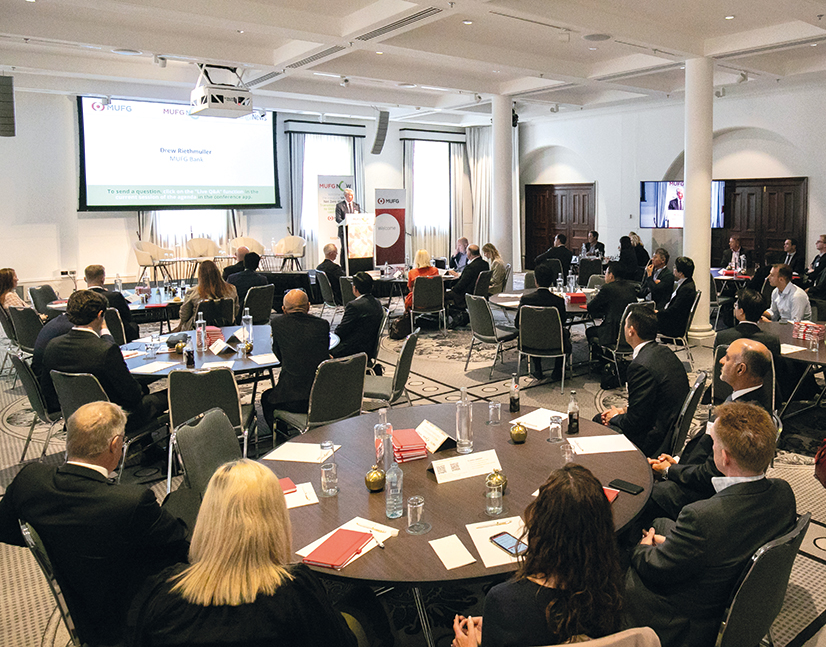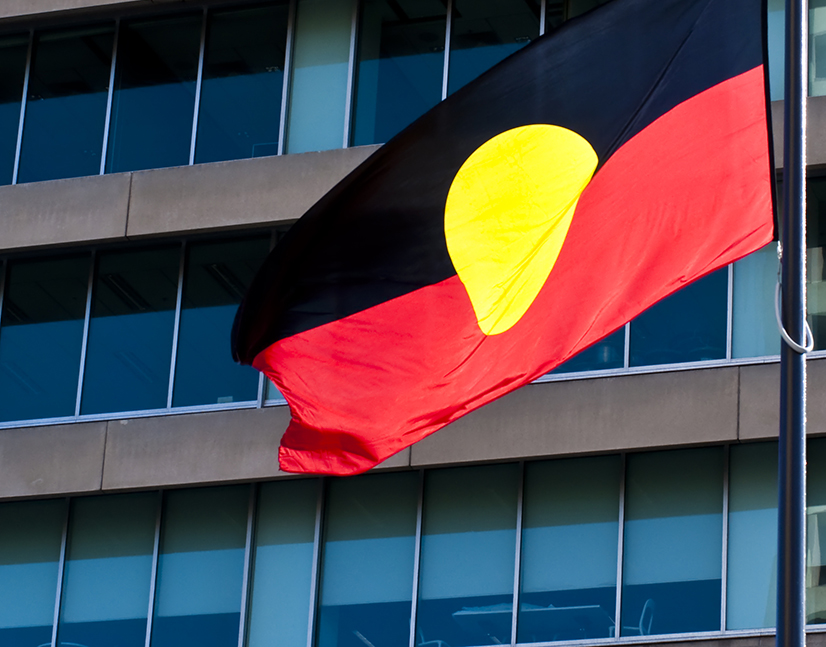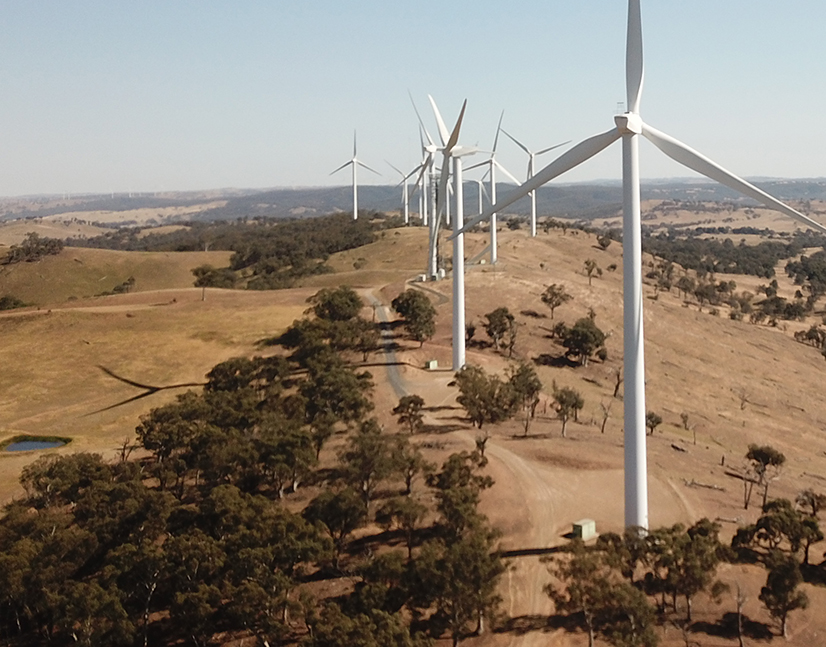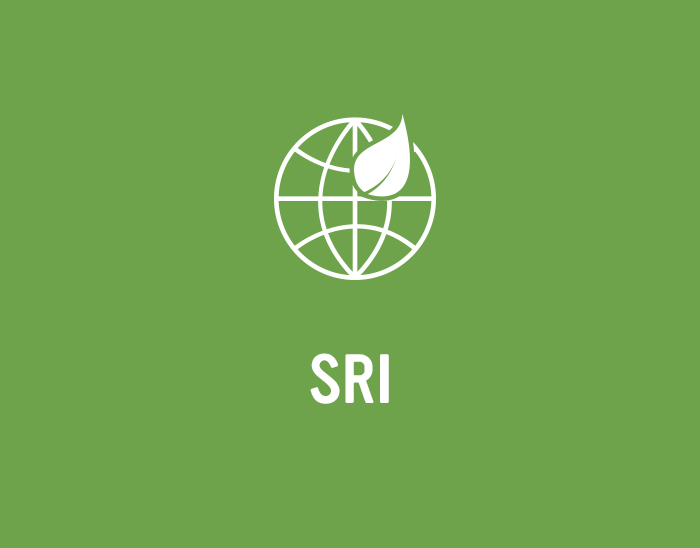
Mandatory climate reporting puts business in the hot seat
Long-anticipated mandatory climate reporting for corporate Australia took a step closer to reality in January as the Australian government published its draft legislation for the forthcoming regime. Industry experts speak to KangaNews about what it means for businesses – and who will be ready for the task.
Jeremy Chunn Editorial Consultant KANGANEWS
Joanna Tipler Staff Writer KANGANEWS
If any parts of corporate Australia were in doubt about their role in reversing global warming, Commonwealth treasurer, Jim Chalmers, has made it clear. He announced on 12 January that the federal government has drafted legislation to make climate-related reporting mandatory for very large companies, starting 1 July this year, with large-and medium-sized companies to follow in 2026 and 2027.
The new law will oblige companies to produce an annual sustainability report to accompany their usual financial reporting. Eventually, sustainability reports will detail climate resilience assessments, scope-one, scope-two and scope-three emissions data, and industry-based metrics disclosures. However, the Australian government is taking a “phased” approach to implementation (see box).
Nicole Yazbek-Martin, Canberra-based head of taxonomy and natural capital at the Australian Sustainable Finance Institute (ASFI), says mandatory climate-related disclosure will help channel more capital into activities consistent with Australia’s emissions reduction goals. She comments: “Australian law already requires directors to disclose material risks, including climate-related risks. But mandatory disclosure will support greater consistency and comparability of disclosures and establish an economy-wide baseline standard.”
Australia’s emissions reduction goals include alignment with the Paris Agreement, which aims to keep global warming to well below 2°C above pre-industrial levels and pursue efforts to limit it to 1.5°C above pre-industrial levels. This means achieving net zero CO2 emissions globally by 2050. Global greenhouse gas emissions in 2022 exceeded 53 billion tonnes of CO2 equivalent according to the International Energy Agency – and are tracking upward. Aligning with the Paris Agreement is an enormous task.
Robust accounting should focus corporate Australia on reducing emissions, but the government’s draft legislation includes more than just reporting emissions data. “It is about putting rigour behind reporting across the four components established by the Taskforce on Climate-related Financial Disclosures [TCFD]: governance, strategy, risk management, and metrics and targets,” says Charles Davis, Sydney-based managing director of sustainable finance and ESG at Commonwealth Bank of Australia.
For example, the draft legislation requires companies to look ahead via scenario analyses. Climate-related risk evaluation requires two quantitative scenarios, with at least one of them aligned to 1.5°C warming.
“This requirement contains a lot of implementation challenge,” says Anna Hancock, Melbourne-based executive director at climate change investment and advisory firm, Pollination Group. She adds that companies will have to ensure they are not just connecting with abstract climate models – because they will be under scrutiny.
The government’s draft legislation prescribes that affected companies follow the reporting standards prepared by the Australian Accounting Standards Board (AASB). The national standards are in the process of being finalised. However, the AASB released its exposure draft (ED) SR1 Australian Sustainability Reporting Standards – Disclosure of Climate-related Financial Information in October 2023.
Step by step
Mandatory climate-related financial disclosures for Australian businesses will be introduced in stages, starting with the largest businesses and working down to medium-sized entities.
The Australian treasury’s Mandatory Climate-related Financial Disclosures – Policy Position Statement categorises entities affected by the draft legislation into three groups.
If all goes as planned, the first annual reporting period for group one will start on 1 July 2024. Group one comprises entities with any two of a consolidated revenue of A$500 million (US$326.9 million) or more, consolidated gross assets of A$1 billion or more, and 500 or more employees. Group one also includes reporting entities above the national greenhouse and energy reporting (NGER) threshold.
Group two will be required to report from 1 July 2026. In this group are entities with any two of a consolidated revenue of A$200 million or more, consolidated gross assets of A$500 million and 250 or more employees. Group two includes all other NGER reporters as well as asset owners with assets under management of A$5 billion or more.
Group three will be required to report from 1 July 2027. This brings entities into the mix that have any two of a consolidated revenue of A$50 million or more, consolidated gross assets of A$25 million and 100 or more employees.
As outlined by the treasury’s statement, companies must report on scope-one and scope-two emissions in their first reporting year, and scope-three emissions thereafter.
Companies will be required to conduct and report scenario analyses for financial years on or after 1 July 2027. Industry-based metric disclosures will be voluntary until 1 July 2030. After this date, such disclosures will be mandatory.
Echoing the core components of the TCFD, AASB’s ED SR1 asks entities to address governance, strategy, risk management, and metrics and targets. According to ED SR1, “climate-related risks” include physical and transition risks.
The AASB’s draft standards are based on those published by the International Sustainability Standards Board (ISSB) in June 2023 – international financial reporting standards (IFRS) sustainability disclosure standards S1 and S2 – which were established to provide a baseline for global sustainability reporting.
The underlying objective of the IFRS standards is for companies to disclose sustainability-related information that will be helpful for those making decisions about the provision of resources to an entity. IFRS S1 and S2 require companies to divulge sustainability-related opportunities or risks that are “reasonably expected”. The IFRS S1 outlines how disclosures should be reported and IFRS S2 details what will be disclosed.
Having national standards in Australia that align with the international baseline is significant for “improving transparency”, Chalmers said in his announcement on 12 January. He added that standards “will help investors and companies make more informed investment decisions and lay the foundation for a stronger, more robust financial system”.
AASB’s ED SR1 consists of three standards: ASRS S1, S2 and ASRS 101. ASRS 101 is a national service for up-to-date, nonlegislative information. It thus does not have an international counterpart to align with. But in the same vein as IFRS S1 and S2, ASRS S1 covers how a company will generate and prepare its documentation, while the kind of information that a company will be required to disclose is detailed in ASRS S2.
Under ASRS S1, mandatory disclosures will only apply to climate-related financial information – rather than all sustainability-related financial information, as in IFRS S1. In ED SR1, AASB explains that other sustainability reporting matters will be considered “at a later time”.
ASRS S2 is set to implement mandatory climate-related disclosures aligned with IFRS S2, with some modifications. Although IFRS S2 follows the TCFD, which was introduced in 2017, sources agree that even very large Australian companies may not be prepared for the 1 July deadline. “There is probably still quite a bit of work for some companies to do,” says Fortlake Asset Management’s deputy chief investment officer and sustainability lecturer at UTS Business School, Kylie-Anne Richards.
Nevertheless, Davis describes mandatory reporting as a “distinct positive”. He says it will help entities to deliver baseline information, define strategy and move forward while giving clarity to what their transition plans look like.
HARMONISATION AMBITION
The purpose of uniform reporting standards and the publication of more data is in part to make it easier to compare companies, says Murray Ackman, Sydney-based ESG credit analyst at Pendal. This is particularly relevant for the swathe of businesses that are neither unimpeachably green nor irredeemably brown.
Ackman compares the regime to international humanitarian law. “The regime is not for the angels or the demons – they’re going to do what they do. It’s about everyone else, to ensure they know how they are meant to act. Mandatory reporting means the market will be able to assess this more readily.”
“Differences in standards makes it more difficult for investors to make comparisons between opportunities in jurisdictions where the data is available and those where it is not, and brings transparency into question. I would be pleased to see Australia align with other global regulations rather than employ local carve outs.”
Marayka Ward, director, fixed income strategy at QIC in Brisbane, agrees it should make the buy side’s job easier. She explains: “A lot of investors are looking at companies offshore. Anything that helps with international harmonisation is very useful for investors, for comparing companies and opportunities.”
Mandatory reporting will also help Australian companies that are seeking money from offshore investors, Ward adds.
Although the AASB’s draft proposal for Australia’s reporting standards aligns with ISSB’s IFRS S1 and S2, it also includes several modifications to the international baseline, including changes associated with emissions reporting. Included among the many modifications are the incorporation of methodologies used in Australia for estimating emissions, the definition of greenhouse gas (GHG) emissions to exclude other climate-related emissions that are not GHGs, such as ozone-depleting emissions, and terminology that includes not-for-profit entities, to ensure sector neutrality.
Richards says she would prefer to see a longer consultation period ahead of the introduction of mandatory reporting, particularly in areas where local standards are moving away from global settings. If the point of climate reporting is standardisation and transparency, having a different set of rules in Australia makes it harder if, for instance, an investor has a global mandate.
It may well also not be beneficial for reporting companies if the Australian regime strays far from global norms. As Ward says: “While gathering data is a huge job for companies, I’m not convinced carving out for Australian companies is in their best interest, if they want to attract global investment. Differences in standards makes it more difficult for investors to make comparisons between opportunities in jurisdictions where the data is available and those where it is not, and brings transparency into question. I would be pleased to see Australia align with other global regulations rather than employ local carve outs.”
READY OR NOT
The goals of a mandatory climate risk reporting regime may be laudable but delivery is likely to be challenging. In the first wave of implementation, material climate risks and opportunities must be reported, along with scope-one emissions – those generated directly by the company – and scope-two emissions, caused indirectly by a company from the source of the energy it purchases and uses.
Implementation of a market-based method to report electricity use from July 2027 – scope-two emissions – will reveal a reporting company’s use of renewable energy certificates. “Companies that aren’t already seriously considering their electricity sources, including where they can invest in renewable energy, could be left behind – because their failure to do so will be very visible,” says Pollination’s Hancock.
Davis, meanwhile, points out that not every industry has an Australia-specific pathway aligned to 1.5°C. This will need to be an area of focus to ensure consistency of reporting.
The information to be reported includes matters of significant uncertainty, adds Sydney-based King & Wood Mallesons partner, Tim Bednall. He cites forward-looking statements concerning the financial impact of climate-related matters on reporting entities as one example.
Nevertheless, Bednall says the resources sector, large banks and insurers appear in general to be well prepared. “They have systems in place and have been reporting on similar matters for some time,” he confirms.
Bednall is less optimistic about the ability of medium-sized companies to meet the deadline for climate-related reporting. “I think there are about 20,000 of these companies in Australia. They will be required to report from 1 July, 2027 and I don’t think they are ready,” he says.
Tracking scope-three emissions involves collecting emissions data in the supply chain – including from a company’s providers and customers. This is likely to be the biggest challenge for reporting companies (see box).
Market users are also keeping a close eye on potential loopholes. For instance, the draft standards include the option not to disclose in areas where data are sufficiently uncertain as to be unreliable. “It will be interesting to see whether reporting companies use the option not to disclose uncertain information or bow to investor or activist pressure to disclose unreliable information,” Bednall says. “There is a conflicting pressure if an entity makes an estimate that turns out to be wrong and is exposed to litigation.”

WOMEN IN CAPITAL MARKETS Yearbook 2023
KangaNews's annual yearbook amplifying female voices in the Australian capital market.
















Scope-three: liabilities on the ledger
As companies boost their efforts to reduce emissions, the focus will turn to their wider spheres of influence. Market sources say measuring and reporting scope-three emissions will be a particular challenge for financial institutions, while investors face the issue of potentially double-counting emissions.
Scope-three reporting involves collecting emissions data of providers and customers. For example, property group LendLease estimates scope-three emissions account for about 90 per cent of its total. For these emissions to fall, manufacturers of building materials LendLease uses in construction and its portfolio of tenants each must decarbonise their operations.
Scope-three emissions are included from the second year of reporting for all entities. This means 1 July 2025 for group one, 1 July 2027 for group two and 1 July 2028 for group three. Scope-three includes 15 categories, from upstream transportation and leased assets to investments, employee commuting, use of sold products, end-of-life treatment of sold products and waste generated in operations.
All reports for years beginning before 1 July 2030 will need to be audited, although the draft legislation limits the review of reporting to scope-one and scope-two emissions. Full audits – including scope-three – are required for the financial year commencing 1 July 2030 and onward. Before then, directors of reporting companies will be required to declare their reporting complies with the legislation – without independent assurance.
Under the draft legislation to introduce mandatory climate-related reporting, a significant number of large Australian financial institutions will be required to report from 1 July 2024, but in the early years they will have to rely on estimates for scope-three “financed emissions”.
“We expect the data available for financial institutions to report will improve over time, as more entities are captured by the disclosure framework,” says Nicole Yazbek-Martin, head of taxonomy and natural capital at the Australian Sustainable Finance Institute.
Marayka Ward, director, fixed income strategy at QIC, emphasises the scale of the challenge when it comes to scope-three reporting – especially for businesses with extended financed networks.
She tells KangaNews: “Considering the emissions of a bank’s mortgage books, for instance, will require information that it was never required to gather when it wrote mortgages in the first place. It will be a difficult area to measure, as all banks can really do is use the age and type of buildings, while other variables – such as renovations – may be unknown.”
Adrian Berthault, Westpac Banking Corporation’s head of group ESG disclosures and reporting, agrees scope-three is where the hard work will take place. His team produced Westpac’s 2023 climate report, aligned with Task Force on Climate-related Financial Disclosures recommendations. “For a financial institution, downstream is where we have the highest impact,” Berthault tells KangaNews, referencing the financed emissions within a portfolio of lending.
He continues: “To calculate our financed emissions, we rely on customer data. If our customers publicly report their emissions, we have very accurate data; if they have their emissions audited, we have the best data. But a medium-sized or smaller company may not yet report this information
– which means we have to rely on estimates.”
This situation will be helped by the new Australian regime, Treasury Laws Amendment Bill 2023: Climate-related Financial Disclosure, as it will eventually force all companies to report their emissions. “This will not only improve the estimates of their impact, it will also lift the quality of Westpac’s scope-three reporting,” Berthault says.
Another challenge with scope-three reporting is the challenge of double-counting emissions. This does not mean the risk of two companies effectively reporting the same emissions. What is a scope-one emission for one entity can easily be a scope-three emission for another, and the purpose of the reporting regime is to make businesses individually accountable for their full sphere of influence, not to produce a final count of emissions in the abstract.
Double counting is actually an intra-entity risk. For instance, Ward says, QIC has long counted the emissions of the federal and state governments individually – even though the Commonwealth’s emissions are an amalgamation of what is reported by the states. Furthermore, even state-level emissions likely double-count private-sector numbers, as they are a total of what happens within the state’s geographic boundaries.
Ward says it is possible to resolve the issue by geographically locating where all the companies are. But QIC has opted for a more conservative route. She explains: “There are several examples, including offshore, where investors are not including the government, or the quasi-government, portion in their portfolios. If they only report on corporate emissions, this might comprise only 10 per cent of their portfolio. We don’t think this is representative of the emissions being financed, even if the government portion is held for duration management purposes.”